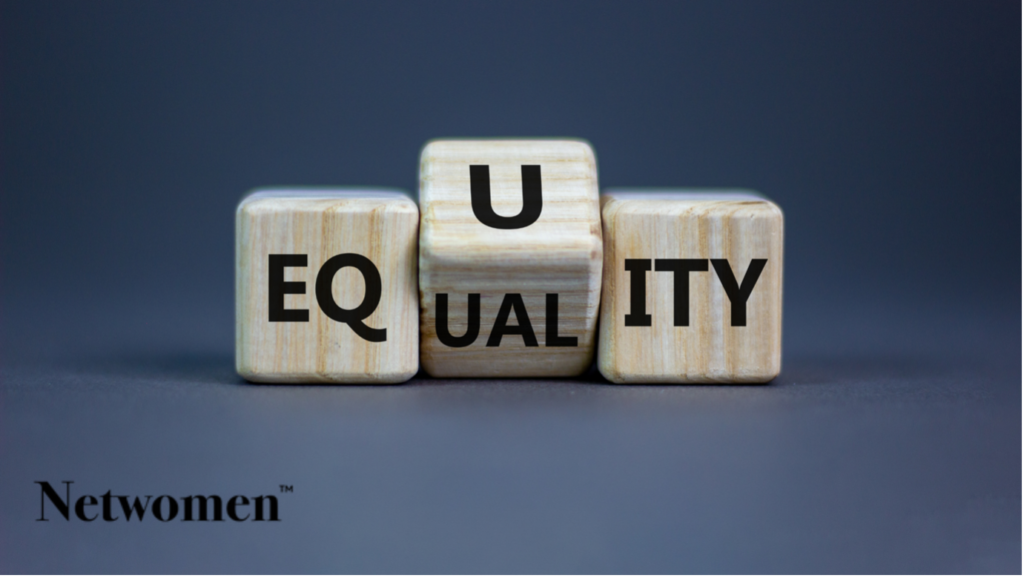Creating a Pipeline for Female Leaders: Best Practices for Organisations
In today’s rapidly evolving business landscape, fostering diversity and inclusion is not just a moral imperative but a strategic necessity. Developing a robust pipeline for

In our pursuit of a just and inclusive society, the terms “equity” and “equality” are often used interchangeably. While both concepts revolve around the idea of fairness, they represent distinct approaches to addressing societal disparities. In this blog post, we will delve into the difference between equity and equality, examining their definitions, applications, and implications. By understanding these concepts, we can work towards creating a more balanced and equitable world.
Equality: Treating Everyone the Same
Equality is the principle of treating all individuals or groups in the same way, without discrimination or favouritism. It operates on the assumption that everyone starts from the same position and has equal opportunities and resources. Equality aims to eliminate barriers and promote equal access to rights, resources, and opportunities for all members of society.
Imagine a scenario where a teacher distributes identical textbooks to a class of diverse students. While this may seem fair, it fails to acknowledge that some students may require additional support. Equality alone does not consider the inherent differences in circumstances, needs, or backgrounds that can impact individuals’ ability to thrive.
Equity: Addressing Disparities and Providing Fairness
Equity, on the other hand, recognises that fairness cannot always be achieved by treating everyone equally. Equity acknowledges that different individuals or groups may require different resources and support to attain equal outcomes. It focuses on rectifying existing inequalities by allocating resources and opportunities based on specific needs and circumstances.
Returning to the classroom example, equity would involve providing additional resources, such as tutoring or specialised teaching techniques, to students who face educational disadvantages due to factors like language barriers or learning disabilities. By addressing these disparities and tailoring support to individual needs, equity strives to create a level playing field where everyone has an equal chance to succeed.
Key Differences and Implications:
Treatment vs Outcome: Equality emphasises equal treatment, whereas equity prioritises equal outcomes. Equality aims to ensure equal opportunities, whereas equity seeks to address systemic disadvantages that can hinder individuals’ abilities to reach those opportunities.
Universality vs Individuality: Equality treats everyone uniformly, whereas equity acknowledges individual differences and diverse circumstances. Equity recognises that fairness may require providing different levels of support to different individuals to overcome existing disparities.
Redistributive Approach: Achieving equity often involves redistributing resources, opportunities, and privileges to create a more balanced and just society. It challenges the status quo and calls for systemic change to dismantle institutional barriers and biases.
Long-Term Impact: While equality is crucial for upholding basic rights and equal treatment, equity aims to address long-standing disparities and foster lasting change. By prioritising equity, societies can break cycles of disadvantage, promote social mobility, and enhance overall well-being.
In our pursuit of a fair and inclusive society, understanding the distinction between equity and equality is essential. While equality ensures equal treatment, equity goes beyond and focuses on addressing systemic disparities. Embracing equity requires us to recognise and accommodate diverse needs and circumstances, ensuring that everyone has a genuine opportunity to thrive. By striving for both equality and equity, we can work towards a world that is more just, compassionate, and inclusive for all.
Get in touch with the team at Netwomen hello@netwomen.co

Want to chat? hello@bypinky.com. If you want to Create your Killer Mindset click here to book a free 30-minute discovery session online.
In today’s rapidly evolving business landscape, fostering diversity and inclusion is not just a moral imperative but a strategic necessity. Developing a robust pipeline for

We’re in a business world these days that’s going so fast, it’s like we’re supercharging ahead, but, burnout has become a critical issue, particularly affecting

These days, when it comes to business, fostering an inclusive culture isn’t just a moral imperative; it’s also a strategic advantage. According to a 2020
© netwomen.co | Netwomen TM